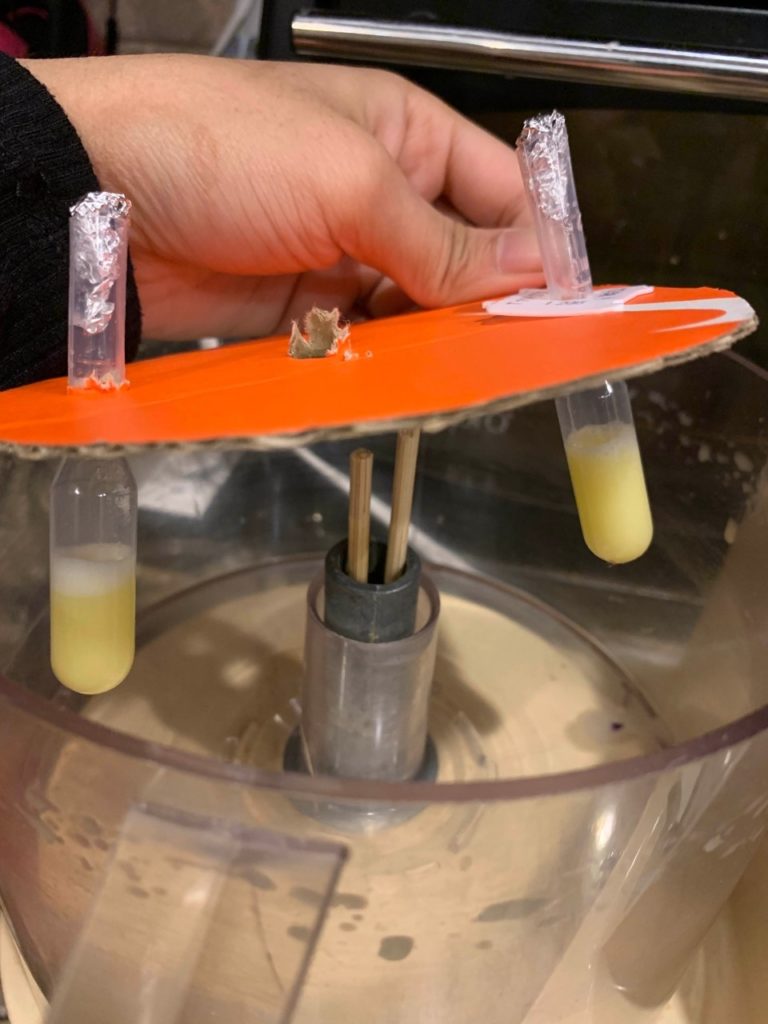Try this at home
Student researchers turned to everyday items to isolate antibodies from chicken eggs

In the fall of 2020, Stanford freshman Caitlin Kunchur was living with her parents in South Carolina, experiencing college life through a steady stream of video meetings. More than 2,500 miles from Stanford’s main campus in Palo Alto, California, her chances to work in a university research lab were nearly nonexistent.
Then a post appeared on one of her Slack channels — a shared community for students interested in biodesign. Protein chemist Daria Mochly-Rosen, PhD, wanted help devising a cheap and easy way to isolate antibodies from the yolks of chicken eggs.
Mochly-Rosen had been working with a team of scientists — through the Stanford SPARK Global Program in Translational Research that she founded and leads — to show that chickens vaccinated against COVID-19 lay eggs containing virus-fighting antibodies.
Researchers had learned that these IgY antibodies, isolated from egg yolks, could be used as nasal drops in humans to provide short-lived but effective protection against viruses.
Typically, researchers isolate IgY from eggs using specialized reagents and expensive centrifuges — which spin tubes at high speed to separate molecules by their densities. Mochly-Rosen wanted something much more accessible.
“I thought if we could just figure out a way for people to isolate these antibodies using common household supplies, this could be a really great solution for low-income countries to be able to generate some protection against COVID-19 or future viruses,” she said.
Kunchur, four other undergraduates and two master’s students, responded to Mochly-Rosen’s query. “I was stuck at home with a lot of free time, and getting to actively participate in COVID-19 research was not an opportunity I could pass up,” said Kunchur.
“I literally wandered around my kitchen and garage looking at everything I could find that had spinning parts or motors.”
Stanford University student Caitlin Kunchur
Some team members tackled how to separate and filter parts of the egg and alter the chemical properties of the yolk (settling on white vinegar, baking soda and salt as key ingredients), while Kunchur designed a cheap centrifuge to separate out antibodies.
“I literally wandered around my kitchen and garage looking at everything I could find that had spinning parts or motors,” she said. Spinning a wheel didn’t generate enough force. A blender didn’t easily hold the samples. But an old food processor sparked Kunchur’s imagination.
She dropped some skewers into the central spindle of the food processer, jammed a cardboard disk on the top and pushed tubes of egg yolk into holes in the cardboard.
Kunchur filmed the test run of the improvised centrifuge, then played it, in slow-motion, for the team during a late-night video conference. “It was really an ‘aha!’ moment,” she recalled. “We could see the separation as it happened and got a beautiful antibody pellet at the bottom of each tube.”
Eventually, the students designed a 3-D printed version of the tube-holder to convert a basic $44 Hamilton Beach food processor into a centrifuge. They verified that they were isolating IgY antibodies and calculated that, using their protocol — even including the cost of a food processor — anyone can isolate chicken antibodies for about 66 cents a dose.
That is about one-eighth the cost of IgY production using standard methods, they reported in the Journal of Global Health earlier this year.
With their publication and an early-phase safety and efficacy study of anti-SARS-CoV-2 IgY antibodies, they hope that entrepreneurs or nonprofit health groups pick up where they left off, producing and distributing such kits for the local isolation of antibodies.
“These students were all incredibly creative and motivated,” said Mochly-Rosen, the George D. Smith Professor of Translational Medicine. “I think it’s pretty amazing what they were able to do even while stuck at home.”

